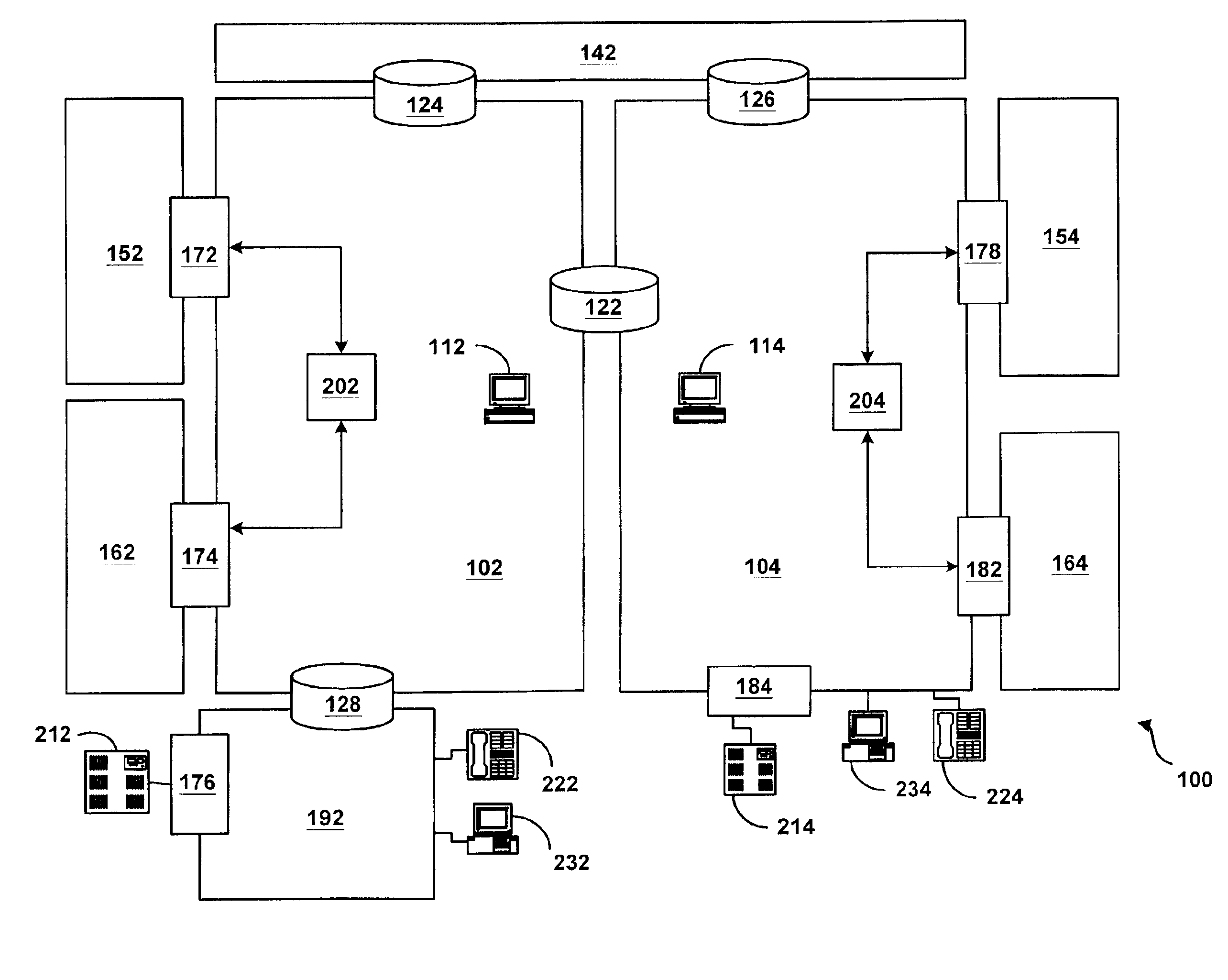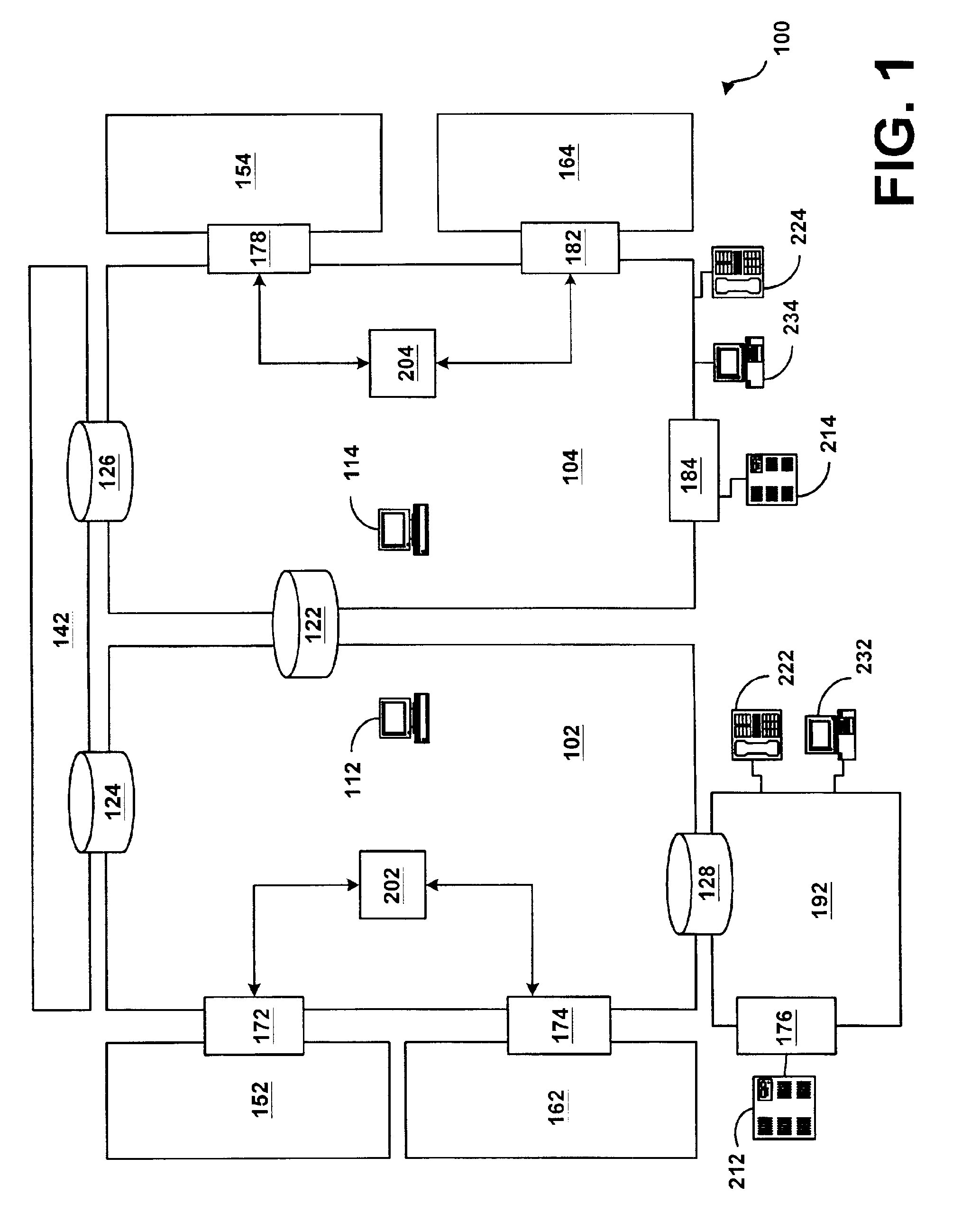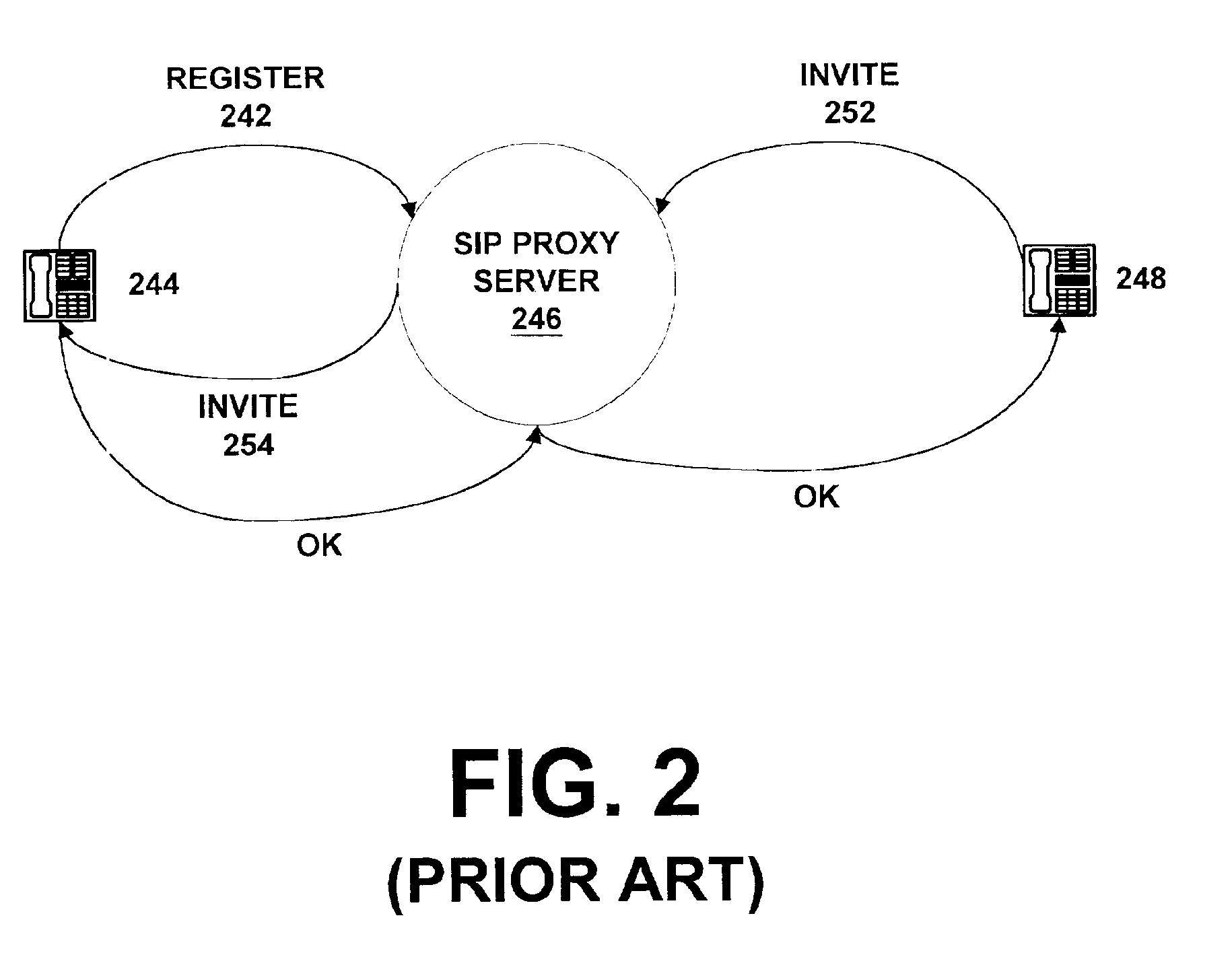System and method for assisting in controlling real-time transport protocol flow through multiple networks via screening
a real-time transportation protocol and routing technology, applied in the field of telecommunication networks, can solve the problems of not being able to route an actual communication session on anything, and not being able to assist in finding a proper transportation rou
- Summary
- Abstract
- Description
- Claims
- Application Information
AI Technical Summary
Benefits of technology
Problems solved by technology
Method used
Image
Examples
example
[0147]
TRIP UPDATEwithdrawn route: nonereachable route: 1 [seq. Num.: 1, origin TRIP ID: 111]next hop server: sip:server.comITAD topology: 222from address: tel:1-617carrier; NextGen / 0000-2400 / U-S / 0.50 / SHQ, G.711
[0148]In accordance with the present example, it should be noted that the from address 992 is a URI and the reachable route 962 is a partial telephone number. Further, it should be noted that the carrier 1012 has five parts, in the format of: name / hours / days / cost / quality. The text within the brackets next to the reachable route attribute 962 indicates the link state attribute's sequence number and originating TRIP ID. There are no withdrawn routes specified in this example, so, in this case, the text is omitted.
[0149]As policies are loaded and as decisions and advertisements are made, changes to each of the TRIBs are preferably made according to the format depicted below.
[0150]
Local-TRIB:FromToNext HopCarrierTel:1-6171sip:server.comNextGen0000-2400U-S0.50SHQ, G.711
Before discu...
PUM
 Login to View More
Login to View More Abstract
Description
Claims
Application Information
 Login to View More
Login to View More - R&D
- Intellectual Property
- Life Sciences
- Materials
- Tech Scout
- Unparalleled Data Quality
- Higher Quality Content
- 60% Fewer Hallucinations
Browse by: Latest US Patents, China's latest patents, Technical Efficacy Thesaurus, Application Domain, Technology Topic, Popular Technical Reports.
© 2025 PatSnap. All rights reserved.Legal|Privacy policy|Modern Slavery Act Transparency Statement|Sitemap|About US| Contact US: help@patsnap.com



